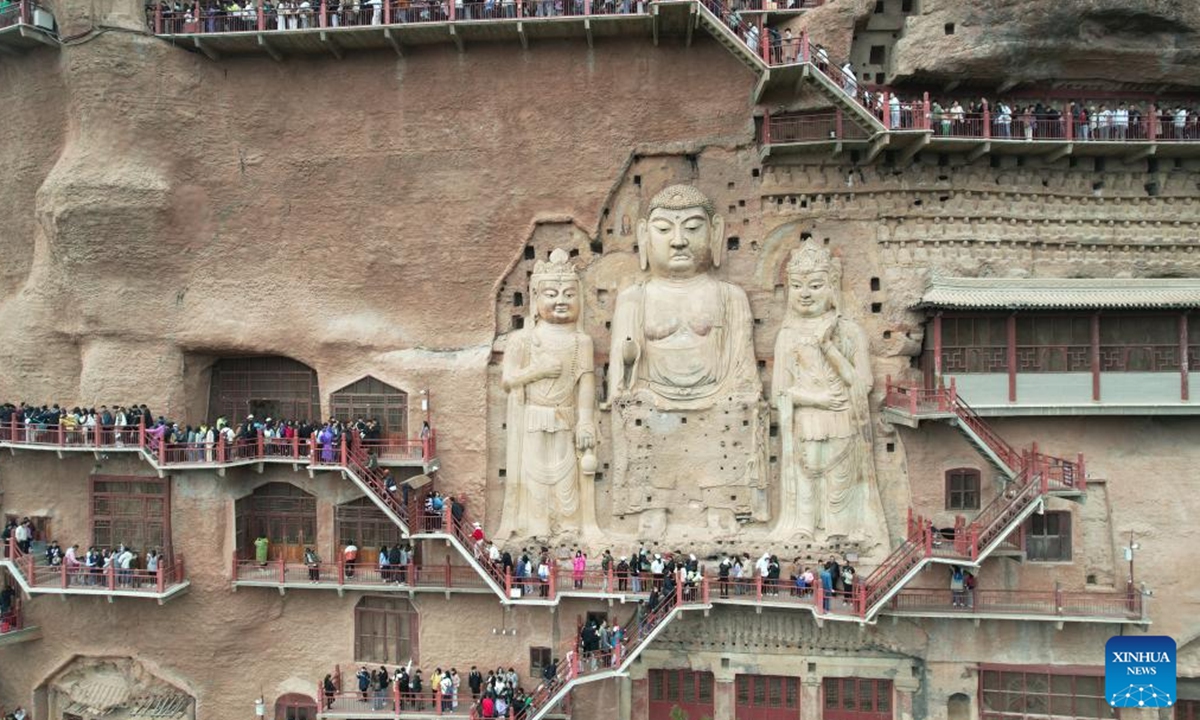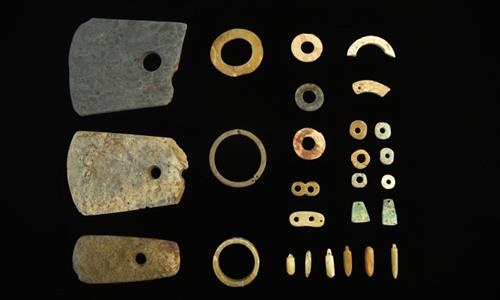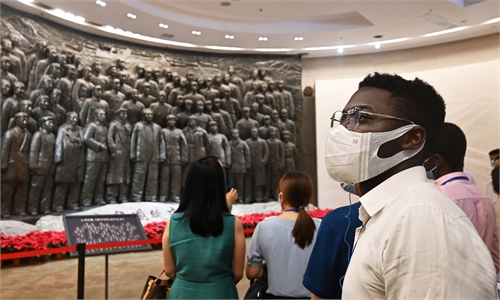ARTS / CULTURE & LEISURE
Revised plan highlights innovative inheritance of cultural heritage
Listed sites ‘organic’ displays of sustainable history

A drone photo taken on April 5, 2024 shows tourists visiting the Maiji Mountain Grottoes in Maiji District of Tianshui City, northwest China's Gansu Province. Photo: Xinhua
A revised implementation plan highlighting the innovative inheritance of the China's cultural and natural heritage was recently issued by seven official departments, including the National Development and Reform Commission.The current revision was based upon a 2021 national initiative that aimed at better conserving, inheriting as well as utilizing the country's heritage resources in niche areas like historical cultural streets, archaeology, and natural sites like the Sanjiangyuan National Park.
The plan prioritizes the conservation of cultural historical cities and streets. A total of 142 cities, including both mega-cities like Beijing and smaller ones such as the ancient Silk Road's "throat" Wuwei in Gansu Province, have been listed as national-level historical cities. Since 2015, a total of 30 national-level cultural streets were released as exemplars to other small cultural blocks.
Dou Saiming, a cultural policy researcher, told the Global Times that these sites are "organic" displays of China's sustainable cultural history that embrace "people's lifestyles, folk customs and ancient architecture."
The Changde Riverside Street in Hunan Province is a good example of this. It is an epitome of the city's classic-modern spirit since ancient buildings and intangible cultural heritage workshops can be seen next to cafés and modern art studios.
"Modern commercial formats can help boost local cultural tourism. Cultural tourism has led to a creative transformation of the historical streets," said Dou. In April, the street became a blockbuster tourist site. It has hosted more than 100,000 people on its busiest day.
The recent plan also highlights a "better display" and utilization of China's major archaeological resources. It encourages establishing well-equipped storehouses for the storing of major archaeological items.
Facilities like "performance theaters" and "small-scale indoor showcase rooms" were also mentioned in the plan as approaches to facilitate the exhibition of China's national-level intangible cultural heritage skills.
"China has already established a comprehensive online database for its intangible cultural heritage resources, but collecting them is not enough, we should show them to the public, especially young learners. I think that is the key for inheritance," Xiang Xinshuang, an intangible cultural heritage and Chinese folk art researcher, told the Global Times.
In the plan, the "showcasing" strategy has also been associated with other national-level projects unrelated to culture. The plan calls for establishing more facilities to showcase China's major construction projects, industrial projects, scientific projects and so forth.
In Tianshui, a city in Gansu Province, the Tianshui Industrial Museum documents not only the city's manufacturing ingenuity, but also how the city contributed to China's Third-Front Movement dating back to 1964.
The Third-Front Movement marked the largest industrial migration in the country's economic and manufacturing history. The Tianshui Industrial Museum has collected more than 1,000 objects that show how the movement impacted local growth.
A museum guide surnamed Huang told the Global Times that the country's industrial culture is a great channel for engaging young generations in China's historical social growth.
"Niche exhibition facilities are as important as national-level museums because the exhibited local history is a proof of how diverse regional cultures contributed to the country's modernization," Dou told the Global Times.
Other than the cultural sector, the 2024 plan also emphasizes creating more public educational facilities for National Parks in China. Including the Sanjiangyuan National Park, the country now has five pilot parks like the Giant Panda National Park and National Park of Hainan Tropical Rainforest.



